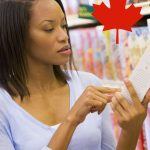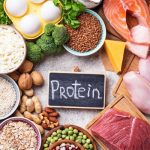 During August and September on the Prairies you’ll find gleaming black cherries hanging in dense clusters on shrubs along the roadside, or in bluffs, ravines and open woodlands. Known as chokecherries, because of their unique slightly astringent flavour, they have recently undergone a name change. Commercially they will be known as black cherries to make marketing easier in the global market.
During August and September on the Prairies you’ll find gleaming black cherries hanging in dense clusters on shrubs along the roadside, or in bluffs, ravines and open woodlands. Known as chokecherries, because of their unique slightly astringent flavour, they have recently undergone a name change. Commercially they will be known as black cherries to make marketing easier in the global market.
Most seasons the shrubs produce abundantly but as they are native to western Canada you won’t find recipes in many published cookbooks. Here are several collected by Betty Burwell when she was operating a Food Processing Line for Food Focus Saskatoon, Inc. The service for home canners no longer exists but the recipes may help you use this native product.
One word of warning – chokecherry stones release a harmful substance called hydrocyanic acid into the stomach so avoid swallowing the stones. Consuming too many will make you ill. Chokecherries are excellent in jam, jellies, pies and desserts if the stones have been removed.
Extracting the Chokecherry Juice
| 10 cups | washed,with stems removed | 2.5 L |
| 5 cups | water | 1250 mL |
Add 5 cups (1250 mL) water to 10 cups (2.5 L) berries and simmer 15 minutes. Crush fruit with potato masher as it softens. Drain through a moistened jelly bag. (If the juice is to be used for jelly, choose berries that are under ripe as well as ripe, so the pectin content of the juice is higher).
Chokecherry Juice Drink
| 3 cups | chokecherry juice | 750 mL |
| 1 cup | sugar | 250 mL |
Combine juice and sugar. Bring top a full rolling boil and boil for 1 minute. Pour into clean jars and freeze, or process for later use. Process one pint (500mL) or one quart (L) jars for 10 minutes in a boiling water bath.
To Serve: Mix equal parts of concentrate to water or serve with gingerale for a light, bubbly drink.
Chokecherry Vinegar
| 3 cups | chokecherries | 750 mL |
| 1 cup | vinegar | 250 mL |
| 1cup | water | 250 mL |
| sugar |
Wash and mash berries. Place in a glass bowl. Combine vinegar and water. Pour over berries (solution should cover berries). Let stand 24 hours, stirring occasionally. Place in a large saucepan, and slowly bring the mixture to a boil. Boil 5 minutes. Strain through a jelly bag. Do not squeeze bag.
For each cup (250 mL) juice, add 1 cup (250 mL) granulated sugar. Bring to a boil. Boil 2 minutes. Remove from heat. Allow to settle. Bottle and refrigerate for up to 6 months, or pour into sterilized jars, seal and process for 10 minutes in a boiling water bath.
To Serve: Add to 2 – 4 tablespoons (25 – 60 mL) of concentrate on top of ice cubes in a glass. Fill with water, club soda, or sparking water. (Blueberries or saskatoon berries may be substituted for chokecherries in this recipe.)
Chokecherry Syrup
| 4 cups | chokecherry juice | 1L |
| 5-6 cups | sugar | 1250-1500 mL |
| 1-2 cups | light corn syrup | 250-500 mL |
| 1/4 tsp | almond flavouring (optional) | 1 mL |
Measure juice into a large, broad saucepan. Add syrup and sugar. For tarter syrup, add 1 tablespoon (15 mL) lemon juice for each cup (250 mL) chokecherry juice. Bring to a hard rolling boil, stirring constantly. Boil for 5 minutes. Remove from heat and pour into hot sterilized jars. Seal, leaving 1/2 inch (1 cm) headspace and process in a boiling water bath for 10 minutes.
Chokecherry Jelly
| 3 1/4 cups | chokecherry juice | 800 mL |
| 4 1/2 cups | sugar | 1.25 mL |
| 2 oz | package powdered | 57g |
| fruit pectin |
Combine chokecherry juice and pectin in a large saucepan. Bring to a full rolling boil. Add sugar. Boil hard one minute, stirring constantly. Remove from heat. Skim off foam. Pour into sterilized jars. Leave 1/2 inch (1 cm) headspace. Clean jar rim. Seal. Process 5 minutes in a boiling water bath.
Yield: 7 -1/2 pint jars (250 mL jars)
Chokecherry Jelly (No Pectin)
| 4 cups | chokecherry juice | 1000 mL |
| 3-4 cups | sugar | 750-1000 mL |
| 4 tbsps | lemon juice | 60 mL |
Select a mixture of slightly under ripe and ripe chokecherries for juice extraction as over ripe berries will not give a good gel. Work with a small amount of juice at a time for a successful gel.
Bring 4 cups (1000 mL) chokecherry juice and 4 tablespoons (60 mL) lemon juice to boil in a large, broad saucepan. Boil for 3 minutes. Remove from heat and do a pectin test.
Measure 1 tablespoon (15 mL) of rubbing alcohol into a small glass. Add one teaspoon (5 mL) of juice and mix. DO NOT TASTE. If a clot forms which can be picked up on the tines of a fork, there is enough pectin to make a good jelly, using 1 cup (250 mL) sugar to each 1 cup (250 mL) juice. If a clot does not form, boil 3 more minutes and repeat the test. If a clot forms, use 3 cups (750 mL) sugar to 4 cups (1 L) juice. If no clot forms, use commercial pectin and follow exactly the manufacturer’s instructions for ingredients and cooking times. Add sugar to juice. Stir to dissolve. Bring mixture to a full rolling boil and boil rapidly to the jelly stage. Stir frequently to prevent mixture from scorching.
Remove from heat, remove scum and pour into hot sterilized pint (500 mL) jars leaving 1/2 inch (1 cm) headspace. Process 5 minutes in a boiling water bath.
Yield: 2 pint (500 mL) jars
Crabapple and Chokecherry Jelly
| 4 cups | chokecherry juice | 1000 mL |
| 4 cups | crabapple juice | 1 L |
| 6 cups | sugar | 1.5 L |
Prepare crabapple juice by selecting sound, slightly under ripe fruit. Wash thoroughly, cut off and discard any damaged spots. Remove the stem, but not the blossom end. Cut the crabapples in half, or if large, in quarters. Be sure to cut through the core so that the pectin around the core will be readily released. Add only enough water to the fruit so that it is just barely covered. Boil fruit and water in a covered kettle until fruit is soft and mushy; stir often to prevent burning. Crush fruit with a potato masher during the cooking process to reduce the boiling time. Pour hot cooked fruit into a moistened jelly bag. Hang over a bowl until dripping ceases (about 12 hours). Squeezing the jelly bag increases the quantity of juice, but the jelly will be cloudy.
Make chokecherry juice, 1/3 from red and 2/3 from fully ripe chokecherries. Wash, sort, and remove stems from chokecherries. Add enough water to cover (about 1 part water to 2 parts chokecherries), and boil until soft, about 30 minutes. Strain through a moistened jelly bag.
To make jelly: Measure juices into a broad, deep pot and boil uncovered for 3 minutes. Remove juice from heat and test for pectin. If pectin test is good, add sugar slowly to hot juice. Stir until all sugar is dissolved. Return to heat and boil briskly, uncovered. Remove scum as it forms. Test for doneness using the jelly test. Remove remainder of scum with a cold spoon. Pour carefully into hot, sterilized pint (500 mL) jars leaving at least 1/ 2 inch (1 cm) headspace. Process in a boiling water bath for 5 minutes. Begin processing time when water returns to a boil.
Yield: 4 pint (500 mL) jars.
Chokecherry Jam
| 4 cups | chokecherry pulp | 1 L |
| 2 cups | apple or crabapples pulp | 500 mL |
| 4 cups | sugar | 1 L |
Remove stems from chokecherries and wash. Drain and add 1 cup (250 mL) of water to every 4 cups (1 L) of cherries. Place over low heat in a heavy saucepan and simmer until very tender, approximately 20 minutes. Mash fruit with a potato masher as it softens and stir often to prevent scorching. Put fruit through a food mill or sieve to remove hard skins and seeds.
Wash tart apples or crabapples and remove stems and blossom ends. Quarter apples, place in a heavy saucepan and just cover with water. Rub cooked apples through a food mill to remove skins, seeds and cores.
To each 4 cups (1 L) of chokecherry pulp, add 2 cups (500 mL) of apple pulp. To this mixture add 4 cups (1 L) sugar. Place in a large saucepan and stir until sugar dissolves. Bring to a full rolling boil and stir often, cook for 20 minutes.
Pour into hot sterilized pint (500 mL) jars leaving 1/2 inch (1 cm) headspace and seal. Process 10 minutes in a boiling water bath.
This jam will be the consistency of a thick sauce.
Yield: 3 pint (500 mL) jars.
Chokecherry Liqueur
| 2 cups | well ripened chokecherries | 500 mL |
| 1 1/2 cups | granulated sugar | 375 mL |
| 26 oz | dry gin or vodka | 750 mL |
Thoroughly wash and rinse a large 40 oz. (1.25 L) glass container with a tight fitting lid. Wash and rinse berries. Add berries and sugar to container. Pour alcohol over mixture. Seal tightly. Let stand 30 days in a warm place, tipping the container daily until sugar dissolves. Let stand 20 more days. Strain several times. Rebottle and serve.
Eileen’s Chokecherry Wine
| 3 lbs | chokecherries | 1.5 kg |
| 1 lb | raisins (chopped) or grape concentrate (optional) | .5 kg |
| 3 lbs | white granulated sugar | 1.5 kg |
| 1 gal. | (160 oz.) water | 1 gallon |
| 2 | campden tablets | 2 |
| 1 tsp (level) | yeast nutrient | 5 mL |
| 1/2 tsp | pectic enzyme powder | 2 mL |
| 1 tsp (level) | active blend wine | 5 mL |
| yeast |
Starting specific gravity should be 1.100 to 1.105 acid .60%.
Use only sound ripe fruit and remove stems and leaves. Crush cherries, but do not break pits. Put crushed fruit and sugar in primary fermentor. Cover with plastic sheet and leave overnight. Next day, add all other ingredients, except yeast. Stir to dissolve sugar. When must is cool (70 – 75°F), add yeast. Stir the must daily. Ferment for 5 – 6 days, or until specific gravity is 1.040. Strain out the fruit pulp and siphon into gallon jugs or carboys. Attach fermentation locks. Rack in 3 weeks and again in 3 months. When wine is clear and stable, bottle. Wine may be sweetened to taste at time of bottling with sugary syrup (2 parts sugar to 1 part water). Add 3 stabilizer tablets to prevent renewed fermentation.
Age 1 year.
Chokecherry Tarts
| 2 cups | chokecherry juice | 500 mL |
| 1 cup | sugar | 250 mL |
| 3 tbsp | cornstarch | 45 mL |
| 1/2 tsp | almond flavouring | 2 mL |
Combine ingredients, cook on medium heat until thick. Pour into baked tart shells.
Freezing Chokecherries
1. Whole, Unsweetened
Wash fruit. Pack in sanitized containers leaving 1/2 inch (1 cm) headspace, or place on a cookie sheet and freeze individually. Then pour into a sanitized container or plastic bag suitable for freezing with air removed. Seal, label, date and freeze. Chokecherries can later be used for jellies, juices or syrups.
2. Juice
Choose ripe chokecherries. Crush fruit and heat to 165°F (74°C) over low heat. Drain through a jelly bag. Do not squeeze. Cool. Pour into sanitized containers leaving 1/2 inch (1 cm) headspace. Seal, label, date and freeze. To use in jelly making, mix in some slightly under ripe fruit for added pectin.
3. Wet Pack Juice
Pack unsweetened or add 3/4 cup (175 mL) sugar to 4 cups (1 L) juice and stir. Pour into sanitized containers leaving 1/2 inch headspace, Seal, label, date and freeze. Store for up to 1 year at 0°F (-81°C).
Reduced Sugar Chokecherry Jelly
| 6 cups | prepared juice | 1.5 L |
| 1 3/4 oz | Certo Light fruit pectin | 1 box |
| 4 1/2 cups | sugar | 1125 mL |
To make juice: Select chokecherries that are under ripe as well as ripe. Boil 8 cups (2 L) chokecherries with 8 cups (2 L) water for 15 minutes. Crush and put through a moistened jelly bag.
To make jelly:
Fill boiling water bath canner with hot water. Place 7 one-half pint (250 mL) preserving jars in canner over high heat to sterilize. Boil jars for at least 15 minutes to sterilize. Place metal snap lids in boiling water. Boil 5 minutes to soften sealing compound. Keep hot until ready to use.
Mix Certo together with 1/2 cup (125 mL) of sugar. Then add mixture to juice until dissolved. Place pan over high heat, stirring constantly until mixture comes to a full boil.
Stir in remaining 4 cups (1 L) sugar. Stir constantly as mixture returns to a full rolling boil (one that cannot be stirred down). Continue to stir to prevent sticking and boil hard for one minute. If sticking occurs, reduce heat slightly, but maintain the full rolling boil. Remove from heat and skim off foam with a large metal spoon.
Ladle quickly into hot sterilized jar. Leave 1/2 inch (1 cm) headspace. Clean jar rim. Centre metal snap lid. Apply screw band just until fingertip tight. Place in canner. Repeat with remaining jars.
Adjust boiling water level to 1 inch (2.5 cm) above jar tops. Cover canner. Process 5 minutes in a boiling water bath. Begin process time when water returns to a boil.
Remove from canner. Set upright and spaced apart out of drafts to cool. Cool 24 hours. Test for seal (sealed lids curve downward in centre). Remove screw bands. Wipe jars, label and date. Store in cool, dark location.
Yield: 7 one-half pint (250 mL) jars.
Sources: The recipes in this section were collected by Betty Burwell while operating the Food Pro LINE for Food Focus Saskatoon, Inc.







Pingback: Eat This Town | Iconic Foods of Canada: Saskatchewan
Pingback: Gathering Chokecherries | The Re-Farmer
Pingback: Making Chokecherry Vinegar | The Re-Farmer
Pingback: Chokecherry Vinegar Drink | The Re-Farmer